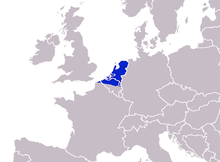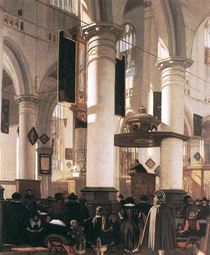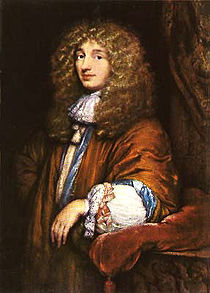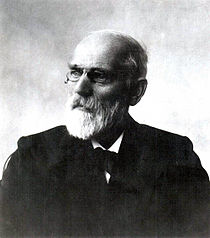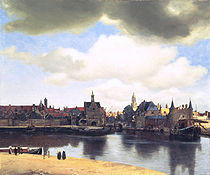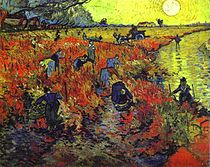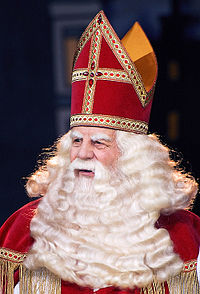- Culture of the Netherlands
-
Life in the Netherlands 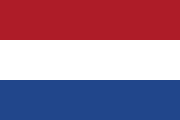 Government
GovernmentDutch culture, or the culture of the Netherlands, is diverse, reflecting regional differences as well as the foreign influences thanks to the merchant and exploring spirit of the Dutch and the influx of immigrants. The Netherlands and Dutch people have played an important role for centuries as a culturally liberal and tolerant centre, with the Dutch Golden Age regarded as the zenith.
Contents
Language
Main articles: Languages of the Netherlands and Dutch dialectsThe main language is Dutch, while West Frisian is also a recognized language and it is used by the government in the province of Friesland. Several dialects of Low Saxon (Nedersaksisch in Dutch) are spoken in much of the north and east and are recognized by the Netherlands as regional languages according to the European Charter for Regional or Minority Languages.
Another Dutch dialect granted the status of regional language is Limburgish, which is spoken in the south-eastern province of Limburg. However, both Dutch Low Saxon and Limburgish spread across the Dutch-German border and belong to a common Dutch-Low German dialect continuum.
Religion
Main article: History of religion in the NetherlandsCalvinism became the theological system of the majority in the Netherlands during the Dutch Revolt in the Eighty Years War. Other religions were tolerated, but could not practice their religion in public.
The Netherlands today is one of the most secular countries in Europe. An estimated 49.6% of the population (2007) call themselves non-religious. The remaining are 15.7% Protestant, 27% Roman Catholic, and 5.3% Muslim (data CBS 2005, 2007). In former ages, Protestantism used to be the largest religion in the Netherlands, but there has always been a high percentage of Roman Catholics, who were strongly predominating in the southern provinces, but also considerably present in the northern ones. However, over the past century the older Protestant churches have been in decline. Islam has begun to gain a foothold and mosques are being built. The Netherlands is also home to a significant Hindu minority, mostly made up of migrants who came from former colony Suriname after its independence. There is also a small group of Jews(40.000) living in The Netherlands, most of them are settled in Amsterdam.
Science, technology and research
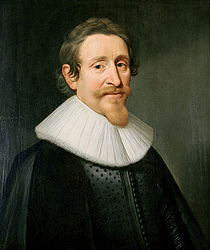 Hugo Grotius - Portrait by Michiel Jansz van Mierevelt, 1631
Hugo Grotius - Portrait by Michiel Jansz van Mierevelt, 1631
Most important and internationally awarded scholars and scientists are:
15th Century:
- Laurens Janszoon Coster, (1370–1440), printer
16th Century:
- Desiderius Erasmus, (1466/1469-1536), humanist
- Dirck Volckertszoon Coornhert (1522–1590), humanist
17th Century:
- Baruch de Spinoza, (1632–1677), philosopher
- Herman Boerhaave, (1668–1738), physician
- Ludolph van Ceulen, (1540–1610), mathematician
- Cornelius Drebbel, (1572–1633), inventor & engineer
- Hugo de Groot (Hugo Grotius), (1583–1645), jurist & philosopher
- Christiaan Huygens, (1629–1695), mathematician, astronomer & physicist
- Antonie van Leeuwenhoek, (1632–1723), scientist
- Anna Maria van Schurman, (1607–1678), first Dutch female university student and scholar
- Simon Stevin, (1548–1620), mathematician & engineer
- Jan Swammerdam, (1637–1680), scientist
18th century;
- Willem 's Gravesande, (1688–1742), philosopher and mathematician
- Pieter van Musschenbroek, (1692–1761), scientist
- Daniel Bernoulli, (1700–1782), mathematician & physicist
19th century:
- C.H.D. Buys Ballot, (1817–1890), chemist & meteorologist
- H. G. van de Sande Bakhuyzen, (1838–1923), astronomer
- Frederik Kaiser, (1808–1872), astronomer
- Thomas Joannes Stieltjes, (1856–1894), mathematician
20th Century:
- Tobias Asser, (1838–1913), jurist [Nobel Prize 1911]
- Evert Willem Beth, (1908–1964), mathematical logician
- Nico Bloembergen, (1920-), physicist [Nobel Prize 1981]
- Luitzen Egbertus Jan Brouwer, (1881–1966), mathematician
- Hendrik Casimir, (1909–2000), physicist
- Paul J. Crutzen, (1933-), atmospheric chemist [Nobel Prize 1995]
- Peter Debye, (1884–1966), chemist [Nobel Prize 1936]
- Edsger Dijkstra, (1930–2002), computer scientist
- Eugène Dubois, (1858–1944), paleontologist & anatomist
- Christiaan Eijkman, (1858–1930), physician & pathologist [Nobel Prize 1929]
- Willem Einthoven, (1860–1927), physician, [Nobel Prize 1924]
- Anthony Fokker, (1890–1939), aviation engineer
- Samuel Abraham Goudsmit, (1902–1978), physicist
- Arend Heyting, (1898–1980), mathematician
- Jacobus Henricus van 't Hoff, (1852–1911), chemist [Nobel Prize 1901]
- Gerardus 't Hooft, (1946-), physicist [Nobel Prize 1999]
- Johan Huizinga, (1872–1945), historian
- Heike Kamerlingh Onnes, (1853–1926), physicist [Nobel Prize 1913]
- Jacobus Kapteyn, (1851–1922), astronomer
- Willem Hendrik Keesom, (1878–1956), physicist
- Tjalling Koopmans, (1910–1985), economist 1975 [Nobel Prize 1975]
- Willem Kolff, (1911–2009), physician & inventor
- Hendrik Anthony Kramers, (1894–1952), physicist
- Hendrik Lorentz, (1853–1928), physicist [Nobel Prize 1902]
- Simon van der Meer, (1925-), physicist [Nobel Prize 1984]
- Jan Oort, (1900–1992), astronomer
- Jan Tinbergen, (1903–1994), economist [Nobel Prize 1969]
- Nico Tinbergen, (1907–1988), ethologist [Nobel Prize 1975]
- Martinus J. G. Veltman, (1931-), physicist [Nobel Prize 1999]
- Hugo de Vries, (1848–1937), geneticist
- Johannes Diderik van der Waals, (1837–1923), physicist [Nobel Prize 1910]
- Pieter Zeeman, (1865–1943), physicist [Nobel Prize 1902]
- Frits Zernike, (1888–1966), physicist [Nobel Prize 1953]
- Hendrik Zwaardemaker, (1857–1930), scientist
Literature
Main article: Dutch literature Eduard Douwes Dekker, also known as Multatuli
Eduard Douwes Dekker, also known as MultatuliSome of the most important and internationally awarded writers are:
16th Century:
17th Century:
19th Century:
20th Century:
- Louis Couperus
- Martinus Nijhoff
- Simon Vestdijk
- Willem Frederik Hermans
- Gerard Reve
- Harry Mulisch
- Jan Wolkers
- Cees Nooteboom
Architecture
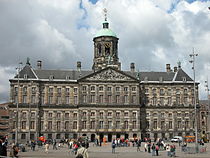 Koninklijk Paleis (Royale Palace) by Jacob van Campen
Koninklijk Paleis (Royale Palace) by Jacob van Campen
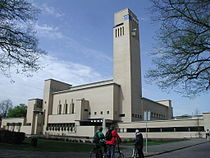 Hilversum City Hall by Willem Marinus Dudok
Hilversum City Hall by Willem Marinus Dudok Main article: Architecture of the NetherlandsSee also: Dutch Golden Age
Main article: Architecture of the NetherlandsSee also: Dutch Golden AgeThe first significant period of Dutch architecture was during the Dutch Golden Age roughly beginning at the start of the 17th century. Due to the thriving economy cities expanded greatly. New town halls and storehouses were built. Merchants who had made a fortune ordered new houses built along one of the many new canals that were dug out in and around various cities and towns (for defense and transport purposes), houses with ornamented facades that benefited their new status. In the countryside new country houses were built, though not in the same numbers. Some well known architects of the period were Jacob van Campen (1595–1657), Lieven de Key (c. 1560–1627) and Hendrik de Keyser (1565–1621).
At the end of the 19th century there was a remarkable neo-gothic stream or Gothic Revival both in church and in public architecture, notably by the Roman Catholic Pierre Cuypers, who was inspired by the Frenchman Viollet le Duc. The Amsterdam Rijksmuseum (1876–1885) and Amsterdam Centraal Station (1881–1889) belong to his main buildings. During the 20th century Dutch architects played a leading role in the development of modern architecture. Out of the early 20th century rationalist architecture of Berlage, architect of the Beurs van Berlage, three separate groups developed during the 1920s, each with their own view on which direction modern architecture should take. Expressionist architects like M. de Klerk and P.J. Kramer in Amsterdam (See Amsterdam School). Functionalist architects (Nieuwe Zakelijkheid or Nieuwe Bouwen) like Mart Stam, L.C. van der Vlugt, Willem Marinus Dudok and Johannes Duiker had good ties with the international modernist group CIAM.
A third group came out of the De Stijl movement, among them J.J.P Oud and Gerrit Rietveld. Both architects later built in a functionalist style.
During the '50s and '60s a new generation of architects like Aldo van Eyck, J.B. Bakema and Herman Hertzberger, known as the ‘Forum generation’ (named after a magazine called Forum) formed a connection with international groups like Team 10.
From the '80s to the present Rem Koolhaas and his Office for Metropolitan Architecture (OMA) became one of the leading world architects. With him, formed a new generation of Dutch architects working in a modernist tradition.
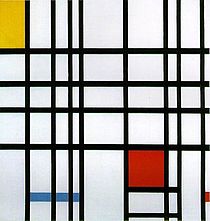 Piet Mondrian, Composition with Yellow, Blue, and Red, 1937-1942, Tate Gallery, London
Piet Mondrian, Composition with Yellow, Blue, and Red, 1937-1942, Tate Gallery, London
Art
See also: List of Dutch painters, Movie theaters in the Netherlands, Cinema of the Netherlands, and Dutch comicsFlemish or Dutch
Until 1830, the Dutch and Flemish were generally seen as one people. Due to religious wars and the Eighty Years War, a split slowly started to take place. Therefore, historical Flemish and Dutch art are hard to separate. Most artists of the period (like Bruegel) are described as Flemish, even though they might have been born in the present day Netherlands. Some of the most famous indisputably Dutch artists from before the 17th century are Hieronymus Bosch, a painter, and the brothers de Limbourg, three miniaturists who are most famous for their work for the Duke of Berry.
Golden Age
In the late 16th century, many painters from Flanders fled to the Northern Netherlands, for religious reasons and because the Netherlands were growing economically. Both regions had a golden age of painting in this period. The most famous Dutch painter was Rembrandt Harmenszoon van Rijn, but other painters such as Johannes Vermeer and Frans Hals are famous all over the world as well. Some more great Dutch painters of the 17th century are:
- Hendrick Avercamp
- Ferdinand Bol
- Aelbert Cuyp
- Gerard Dou
- Carel Fabritius
- Govert Flinck
- Pieter de Hooch
- Jan Lievens
- Nicolaes Maes
- Adriaen van Ostade
- Jacob Isaacksz van Ruisdael
19th and 20th century
The Dutch artists of the 18th century are less well-known. The most important paintings were the land- and seascapes (or marines). Only at the end of the 19th century did one internationally very important painter, Vincent Van Gogh and some other internationally well-acclaimed artists appear, like the realists Jozef Israëls, Anton Mauve and the more impressionist George Hendrik Breitner living in the Netherlands, and the romanticist Lawrence Alma-Tadema, living in England.
In the 20th century, the Netherlands produced many fine painters and artists, including Piet Mondriaan, a noted contributor to the De Stijl art movement, who was also among the vanguard of non-representational painting.[1] The 20th century also produced some of the members of the COBRA movement, including Karel Appel and Corneille.
Music and dance
For more details on this topic, see Music of the Netherlands.For more details on this topic, see Music of Aruba and the Netherlands Antilles.For more details on this topic, see Dance in the Netherlands.For more details on this topic, see Netherlands in the Eurovision Song Contest.The Netherlands has multiple musical traditions ranging from folk and dance to classical music and ballet. In the 21st century people with an African or Middle Eastern background have also had a profound effect, most notably in hip hop and rap. Much more so than most non-English speaking European countries, the Netherlands has remained closely in tune with American and British trends ever since the 50's. In the 21st century, the Netherlands has also become an international center for the electronic music scene, particularly Trance. Dutch DJs consistently rank among the top rated DJs in the world, and have a huge following both domestically and internationally.
Aruba and the five main islands of the Netherlands Antilles are part of the Lesser Antilles island chain. Their music is a mixture of native, African and Dutch elements, and is closely connected with trends from neighboring islands like Barbados, Martinique, Trinidad and Tobago and Guadeloupe, as well as the mainland former Dutch possession of Suriname, which has exported kaseko music to great success on the islands. Curaçao and Bonaire likely have the most active and well-known music scenes. Curaçao is known for a kind of music called tumba, which is named after the conga drums that accompany it.
Cabaret
The Dutch also have their own version of distinct cabaret.
Chansons
Wim Sonneveld (1917–1974), Ramses Shaffy (1933–2009), Liesbeth List, Herman van Veen.
Songs
Boudewijn de Groot, Frank Boeijen
Media
Main article: Media of the NetherlandsThe media of the Netherlands consist of several different types of communications media: television, radio, newspapers, magazines. It is characterized by a tradition of pillarization, and increasing commercialization.
Film
Main article: Cinema of the NetherlandsSome Dutch films have received international distribution and recognition, such as Turkish Delight ("Turks Fruit") (1973), Soldier of Orange ("Soldaat van Oranje") (1975), Spetters (1980) and The Fourth Man ("De Vierde Man") (1983) by director Paul Verhoeven. Verhoeven later went on to direct such Hollywood fare as RoboCop and Basic Instinct.
Other famous Dutch film directors are Dick Maas (De Lift), Fons Rademakers (The Assault), Jan de Bont (Speed), documentary maker Bert Haanstra and Joris Ivens. Film director Theo van Gogh achieved international notoriety in 2004 when he was murdered in the streets of Amsterdam.
Internationally famous Dutch film actors are Jeroen Krabbé, Rutger Hauer, Derek de Lint and also a few female stars like Sylvia Kristel, Famke Janssen and Carice van Houten.
Comics
The Dutch have a distinct comic tradition as well. Even though there is an abundance of Flemish, Franco-Belgian, and American comics, they also created their own tradition, with a more literary kind of comics. The most prominent author was Marten Toonder and his creations Tom Poes and Heer Bommel (Tom Puss / Oliver B. Bumble series).
Cuisine
Main article: Dutch cuisineDutch cuisine is characterized by its somewhat limited diversity; however, it varies greatly from region to region. The southern regions of the Netherlands for example share dishes with Flanders and vice versa. Dutch food is traditionally characterized by the high consumption of vegetables when compared to the consumption of meat. Dairy products are also eaten to great extent, Dutch cheeses are world renowned with famous cheeses such as Gouda, Edam and Leiden. Dutch pastry is extremely rich and is eaten in great quantities. When it comes to alcoholic beverages wine has long been absent in Dutch cuisine (but this is changing during the last decades); traditionally there are many brands of beer and strong alcoholic spirits such as jenever and brandewijn. The Dutch have all sorts of pastry and cookies (the word "cookie" is in fact derived from Dutch), many of them filled with marzipan, almond and chocolate. A truly huge amount of different pies and cakes can be found, most notably in the southern provinces, especially the so called Limburgish vlaai.
Sport
Football is the most popular sport in the Netherlands. Notable Dutch football teams and clubs include: Sparta Rotterdam in 1888, Amsterdamsche Football club Ajax in 1900, Feyenoord Rotterdam in 1908 and PSV Eindhoven in 1913.
The second most popular sport is speedskating. It is common for Dutch children to learn how to skate at an early age. Long distance skating and all-round tournaments are the most popular and most successful areas for the Dutch. In the history of the world championships the champion of the 10 km has always been a Dutchman. Notable athletes are Sven Kramer, Rintje Ritsma and Ard Schenk
Also popular are swimming, hockey and cycling.
Further information: Netherlands national football team, Netherlands women's national football team, Netherlands at the FIFA World Cup, Football in the Netherlands, and Sport in the NetherlandsTraditions
One traditional festivity in the Netherlands is the feast of Sint Nicolaas or Sinterklaas. It is celebrated on the evening before Sinterklaas' birthday on December 5, especially in families with little children. In the United States the original figure of Dutch Sinterklaas has merged with Father Christmas into Santa Claus. In the Netherlands, gift-bringing at Christmas has in recent decades gained some popularity too, but Sinterklaas is much more popular.
A wide spread tradition is that of serving beschuit met muisjes when people come to visit a new-born baby and his mother. Beschuit is a typical Dutch type of biscuit, muisjes are sugared anise seeds.
Other traditions are often regional, such as the huge Easter Fires or celebrating the feast of Sint Maarten on the evening of November 11 when children go door to door with paper lanterns and candles, and sing songs in return for a treat. In the past self-made lanterns were used, made from a hollowed out sugar beet.
Another traditional feast of the Netherlands is Queen's day or "Koninginnedag". This is celebrated in honour of the Queen's birthday. However, this day (the 30th of April) is not the birthday of Queen Beatrix. It was the birthday of her mother, Queen Juliana. The Queen decided to keep this date, because her own birthday (January, the 31st) is in the winter. Jumble sales are traditionally held in the streets of some city centres; the salespeople, including children, often wear orange clothes. The Queen and her family visit two places somewhere in the country. Those places organise a special program, displaying local folklore.
In North-Brabant, Limburg and some other parts of the Netherlands people celebrate carnival similar to the carnival of the German Rhineland.
See also
- Calvinist Church
- Dutch customs and etiquette
- Dutch people
- List of Dutch people
- Roman Catholic Church
References
- ^ "Piet Mondrian", Tate gallery, published in Ronald Alley, Catalogue of the Tate Gallery's Collection of Modern Art other than Works by British Artists, Tate Gallery and Sotheby Parke-Bernet, London 1981, pp.532-3. Retrieved 18 December 2007.
Source
Ad Welschen, 2000-2005: Course Dutch Society and Culture, International School for Humanities and Social Studies ISHSS, Universiteit van Amsterdam.
External links
- Architecture: ArchiNed
- NL Planet - Dutch Culture
Culture of Europe Sovereign
states- Albania
- Andorra
- Armenia
- Austria
- Azerbaijan
- Belarus
- Belgium
- Bosnia and Herzegovina
- Bulgaria
- Croatia
- Cyprus
- Czech Republic
- Denmark
- Estonia
- Finland
- France
- Georgia
- Germany
- Greece
- Hungary
- Iceland
- Ireland
- Italy
- Kazakhstan
- Latvia
- Liechtenstein
- Lithuania
- Luxembourg
- Macedonia
- Malta
- Moldova
- Monaco
- Montenegro
- Netherlands
- Norway
- Poland
- Portugal
- Romania
- Russia
- San Marino
- Serbia
- Slovakia
- Slovenia
- Spain
- Sweden
- Switzerland
- Turkey
- Ukraine
- United Kingdom
- (England
- Northern Ireland
- Scotland
- Wales)
- Vatican City
States with limited
recognition- Abkhazia
- Kosovo
- Nagorno-Karabakh
- Northern Cyprus
- South Ossetia
- Transnistria
Dependencies
and other territories- Åland
- Faroe Islands
- Gibraltar
- Guernsey
- Jan Mayen
- Jersey
- Isle of Man
- Svalbard
Other entities - European Union
Categories:
Wikimedia Foundation. 2010.


